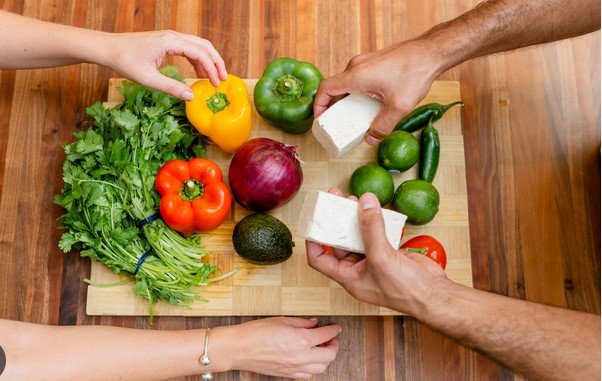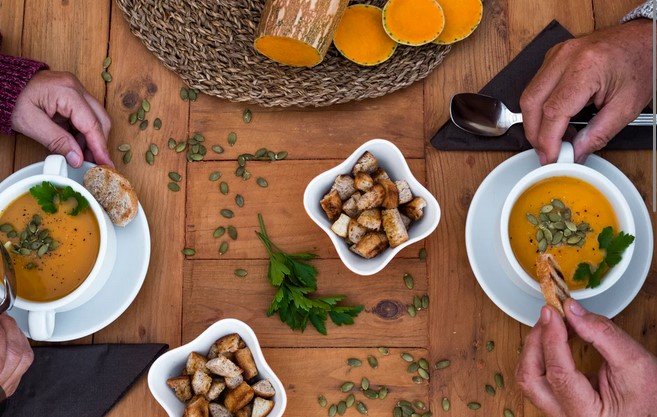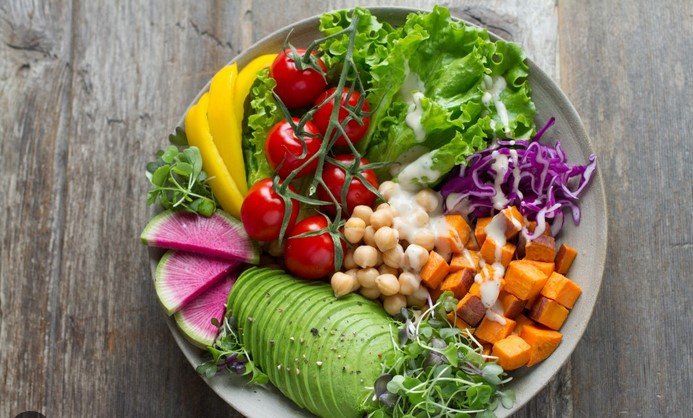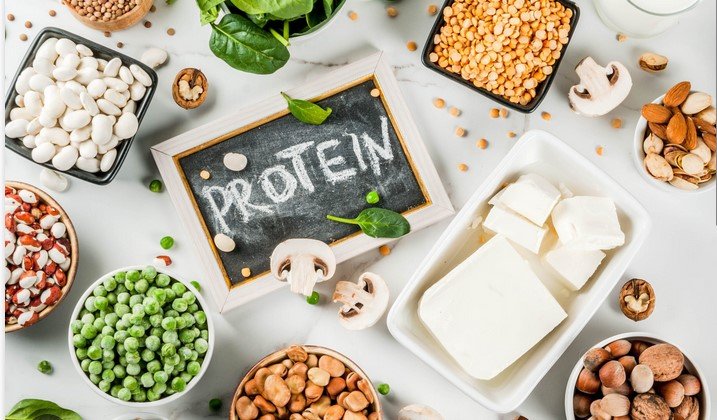Hosting a gathering with both vegan and non-vegan guests can be a challenge, but it’s completely achievable with a bit of planning and creativity. The goal is to create a meal that satisfies everyone’s dietary preferences while keeping things simple, delicious, and inclusive. Here are some tips and strategies for cooking for both vegan and non-vegan guests, ensuring that no one feels left out and everyone enjoys the meal.

Start with Versatile Dishes
To make cooking easier, start with recipes that can be adapted for both vegan and non-vegan guests. Some versatile dishes, like stir-fries, pasta salads, or grain bowls, can easily be made with plant-based options for vegan guests while keeping non-vegan versions on the side.
- Grain bowls: Start with a base of quinoa, rice, or couscous and top with roasted vegetables, greens, and various protein options like tofu, tempeh, or grilled chicken, making it easy to create both vegan and non-vegan versions.
- Stir-fries: A stir-fry is easy to prepare for mixed guests. Cook a variety of veggies, tofu, or tempeh for vegans, and keep some chicken or beef on hand to serve separately for non-vegan guests.
- Pasta: Make a pasta dish with a delicious tomato or pesto sauce. Add a plant-based protein like lentils or chickpeas for vegan guests, and keep some meatballs or cheese on the side for non-vegans.
This approach ensures that your main dishes are naturally adaptable, allowing you to cater to both dietary preferences without creating separate menus for each group.
Choose Dishes with Plant-Based Proteins
Plant-based proteins like beans, lentils, tofu, tempeh, and chickpeas are not only healthy but can be used in both vegan and non-vegan meals. These ingredients are perfect for creating dishes that appeal to all your guests.
- Chili: A vegan chili made with beans, vegetables, and spices can be served as is for vegans. For non-vegan guests, add a side of ground turkey, beef, or cheese to make the dish more versatile.
- Veggie burgers: Prepare both vegan and non-vegan patties, and serve with the same toppings (lettuce, tomatoes, onions, pickles). This way, everyone can enjoy a customized burger without the need for separate dishes.
Plant-based proteins can take on many flavors and textures, making them an ideal choice for cooking for both vegan and non-vegan guests.
Keep Some Dishes Fully Vegan
To ensure that your vegan guests have enough to enjoy, make sure that there are some fully vegan dishes on the table. This helps avoid the need for complicated substitutions and gives your vegan guests the assurance that their dietary choices are being respected.
- Roasted vegetables: Serve a variety of roasted vegetables, such as sweet potatoes, Brussels sprouts, carrots, and cauliflower. These are naturally vegan, flavorful, and a hit with everyone.
- Vegan salads: Create a hearty salad with mixed greens, roasted chickpeas, quinoa, avocado, and a simple vinaigrette dressing. Make sure to offer non-dairy options for the dressing, such as olive oil, lemon, or tahini.
- Vegan dips: Guacamole, hummus, and baba ganoush are all plant-based and easy to prepare in large batches. Serve with pita, vegetables, and crackers for a tasty and inclusive appetizer.
Having a selection of fully vegan dishes ensures that your vegan guests have options, while also adding variety and flavor to the table.
Modify Sauces and Dressings for Vegan Options
Sauces and dressings can easily be modified to accommodate both vegan and non-vegan guests. Instead of using dairy or egg-based products like cream, butter, or mayonnaise, try plant-based alternatives.
- Vegan dressings: Make your own salad dressing using olive oil, balsamic vinegar, lemon juice, or tahini. These are simple to make, customizable, and free from animal products.
- Vegan sauces: Use coconut milk, cashew cream, or vegetable broth to create creamy sauces that are both vegan and satisfying. For example, a vegan Alfredo sauce made with cashews can be served with pasta for everyone.
By preparing vegan-friendly sauces and dressings, you can ensure that all your guests can enjoy the flavors without needing separate options.
Conclusion
Cooking for both vegan and non-vegan guests doesn’t have to be difficult. With a little creativity, you can prepare a menu that satisfies everyone while catering to different dietary preferences. By focusing on versatile dishes, using plant-based proteins, offering inclusive sauces and sides, and being transparent about your ingredients, you can create a meal that everyone will love. With a thoughtful approach, your gathering will be an enjoyable and inclusive experience for all your guests.











